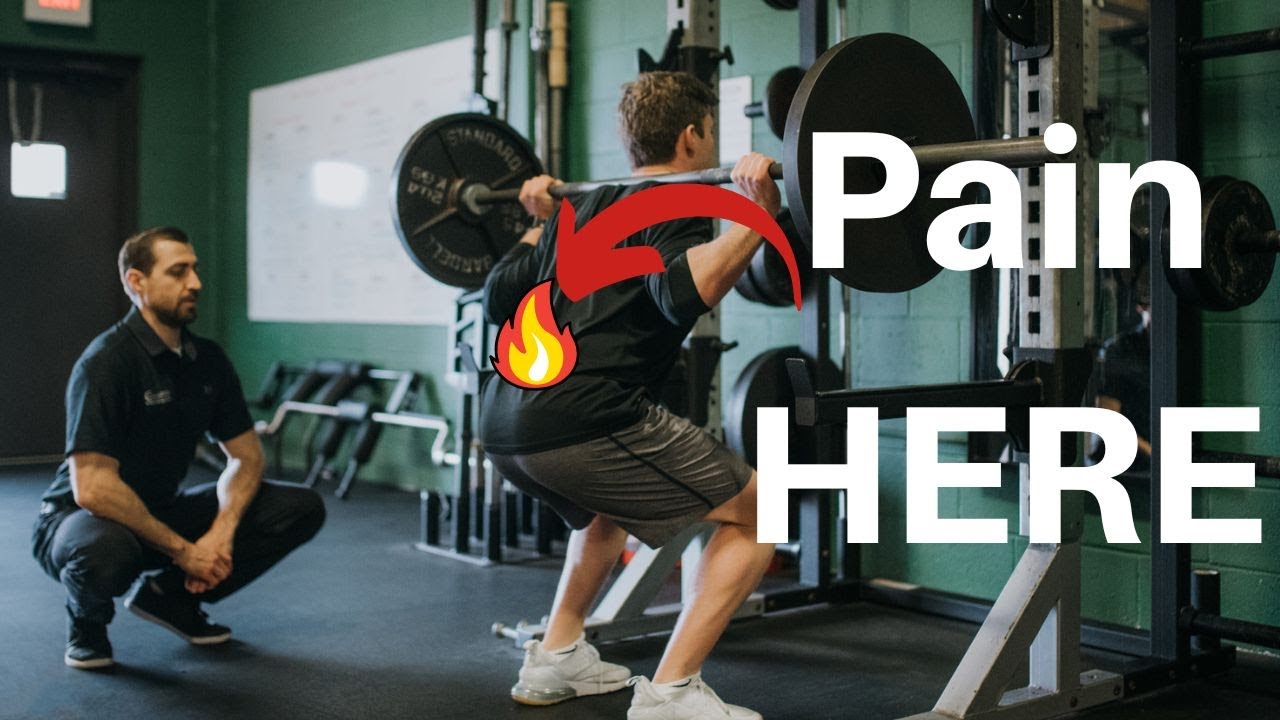
5 Barbell Squat Modifications for Low Back Pain:
Welcome coaches and clinicians!
In today's video, we'll be discussing the importance of modifying the squat for clients and patients with lower back pain. As physical therapists, you know that the squat is a fundamental exercise for developing strength and power in the lower body. However, for clients with lower back pain, performing the squat can be a challenge and painful. This is where modifying the exercise becomes crucial.
If we can find the right modification for our patient then we can simultaneously continue working toward our patient's training goals while rehabilitating them at the same time.
Some of the modifications you may consider include:
- Adjusting the load: For clients with lower back pain, reducing the load on the barbell may be necessary. This will allow them to focus on their form and technique without exacerbating their symptoms. We can do this through increasing the repetition range or slowing down the movement
- Using alternative equipment: If the barbell squat is too challenging, consider using alternative equipment such as kettlebells, dumbbells, or a trap bar. This allows the knees to track forward and take some stress off the spine.
- Modify squat depth: Squatting to a partial range reduces stress on the spine by reducing the moment arm at the hip and reducing lumbar flexion in the spine.
- Add a heel lift or slant board: A slant board or heel lift drives the knees forward more during the squat reducing stress on the spine and allowing the quads to take over and perform more of the work during the movement.
- Try Blood Flow Restriction (BFR) Training: If all else fails using BFR with lighter loads allows you to continue making progress towards strength and hypertrophy goals with less total stress to the spine.
Check the video below to see what I'm talking about:
Ultimately, modifying the squat for clients with lower back pain is essential to help them achieve their fitness goals safely and effectively. As physical therapists, it is our responsibility to ensure that our clients are performing exercises that are appropriate for their unique needs and limitations. By modifying the squat, we can help our clients build strength and power while simultaneously rehabilitating at the same time
In conclusion, modifying the squat for clients with lower back pain is a crucial aspect of effective rehabilitation and training. By assessing each client's individual needs and limitations, we can develop a customized modification plan that meets their unique needs. With the right modifications in place, clients can safely and effectively build strength and power, without exacerbating their symptoms. So, let's get to work and help our clients achieve their fitness goals!
Squat on!
- Dan Pope DPT, OCS, CSCS
Show Notes / Relevant Articles:
- FPF Mini Course - 7 Reasons Why Injuries Happen in the Gym and What to do About
- The Ultimate Guide to Getting Out of Lower Back Pain and Back to Squatting, Deadlifting and Olympic Lifts - With Modification Infographics
- The Best Exercises To Get Out of Lower Back Pain and Back to Training
- 6 Causes of Extension Based Low Back Pain in the Gym
Want to support me and decide topics for future episodes? Click HERE to sign up for FPF "Insiders" for just a dollar. You'll gain access to 100+ webinars, e-books and complete guides. Plus, you'll get private access to the "Insiders" Facebook group where you can have all of your questions answered by me.
Looking for other ways to support me that are 100% free?
- Like, comment and share on youtube, facebook and instagram
- Leave a 5-star review on apple podcasts
Thank you!
Dan Pope DPT, OCS, CSCS
References:
